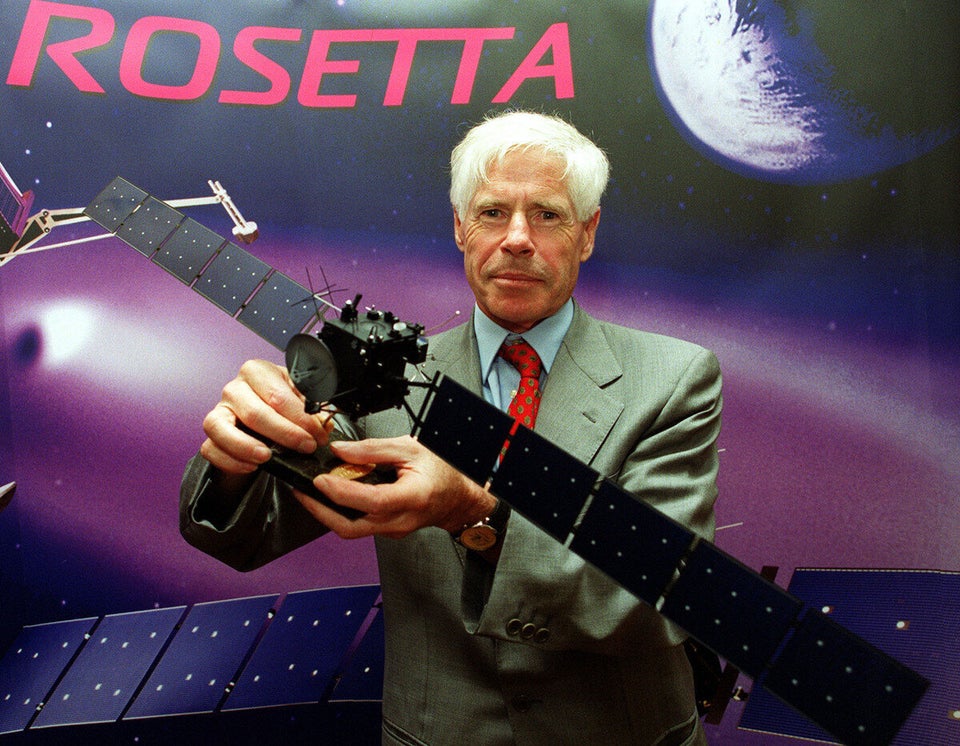The European Space Agency has successfully landed a space probe on the surface of a comet.
The Philae lander softly touched down on comet 67P/Churyumov-Gerasimenko at 16:05 GMT after a ten-year journey that saw it, and its Rosetta mothership, travel over 6.4 billion kilometres.
A radio signal confirming the landing was received by scientists just after 4pm UK time, after taking almost 30 minutes to travel the 316 million miles distance to Earth.
However the landing was not perfect. ESA said that the anchor harpoons on the lander did not fire, and that it cannot confirm that the lander is stable. While the ice screws on the lander's feet - designed to secure it to the comet - did deploy, there will be concerns that the lander might not stay operational for as long as was hoped:
Despite the issues ESA said that the lander remained operational and in "great shape". It will definitely be able to send back important data and presumably pictures, and remains a historic first.
Jean Jacques Dordain, ESA director general, said:
"Philae has landed… This is a big step for human civilisation. This is science. It makes a difference.
"I would like at this stage to repeat what I say after each success. The biggest problem is that it looks easy… When you know the sum of expertise, dedication, the sum of teamwork between 20 nationalities of member states of Europe… when you know that. You know that this type of success is not coming from the sky. It comes from hard work."
There were scenes of jubilation at the ESA operations centre in Darmstadt, Germany, when the landing was confirmed.
Incredibly the landing was entirely automated, based solely on Philae's own automated systems and some incredibly complex pre-programming.
The landing process started at around 9am GMT when Philae separated from the Rosetta spacecraft. It then began its slow and graceful descent down to the surface.
About the size of a dishwasher, the Philae lander anchored itself onto the surface using a combination of drills built into the landing gear as well as harpoons which were intended to fire into the ground and secure it.
Philae was travelling at just 1 metre/second when it landed, with the craft's three-legged landing gear absorbing the impact to prevent rebound. An ice screw in each foot was drilled into the surface. It was hoped that a thruster on top would be used to make sure it did not fly back into space along with the harpoons but neither worked.
Regardless, the lander did make it to the comet - and celebrated in the only way a robot knows how - bantering with William Shatner:
The reaction from the world of space was immediate and overwhelming.
"After more than 10 years travelling through space, we're now making the best ever scientific analysis of one of the oldest remnants of our Solar System," says Alvaro Giménez, ESA's Director of Science and Robotic Exploration.
"Decades of preparation have paved the way for today's success, ensuring that Rosetta continues to be a game-changer in cometary science and space exploration."
#COMETLANDING: Full Coverage
Rosetta was launched on 2 March 2004 and journeyed from Mars to Jupiter and across the Solar System until it arrived in orbit around the comet on 6 August 2014.
The landing site was chosen just six weeks before the landing date, because it was impossible to see the terrain in enough detail until the probe was physically above the comet.
The chosen site, named Agilkia, was named after an island which is now home to the Philae temple ruins in Egypt.
"One of the greatest uncertainties associated with the delivery of the lander was the position of Rosetta at the time of deployment, which was influenced by the activity of the comet at that specific moment, and which in turn could also have affected the lander's descent trajectory," says Sylvain Lodiot, ESA Rosetta Spacecraft Operations Manager.
"Furthermore, we're performing these operations in an environment that we've only just started learning about, 510 million kilometres from Earth."
Stephan Ulamec, Philae Lander Manager at the DLR German Aerospace Center, said:
"We are extremely relieved to be safely on the surface of the comet, especially given the extra challenge of the comet's unusual shape and unexpectedly hazardous surface.
"In the next hours we'll learn exactly where and how we've landed, and we'll start getting as much science as we can from the surface of this fascinating world."
